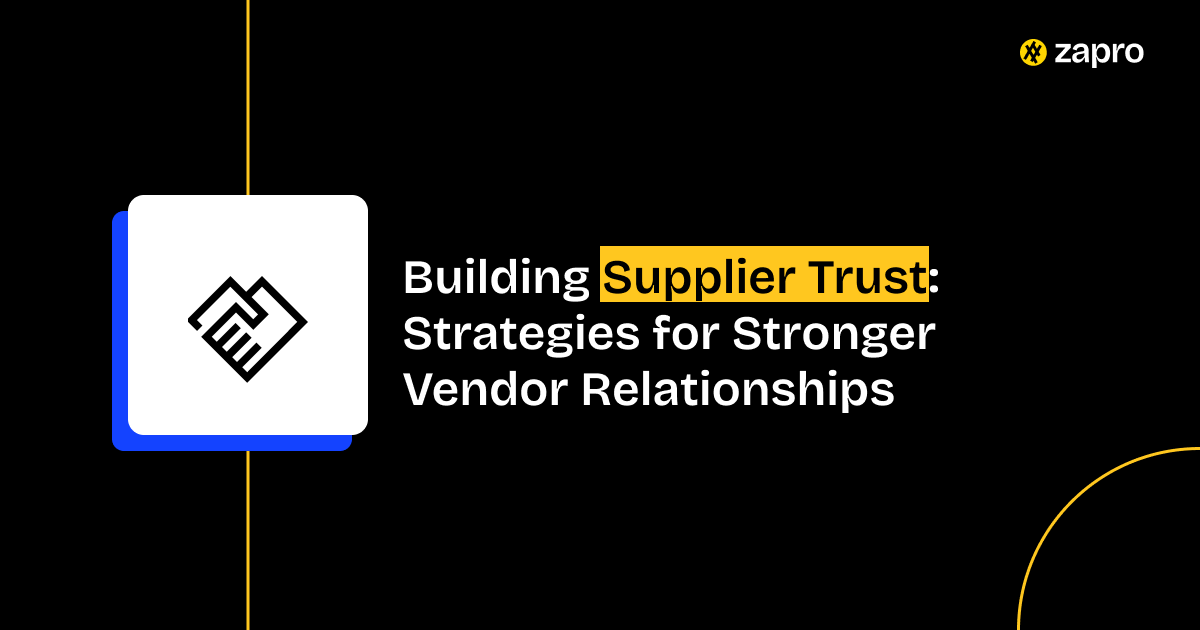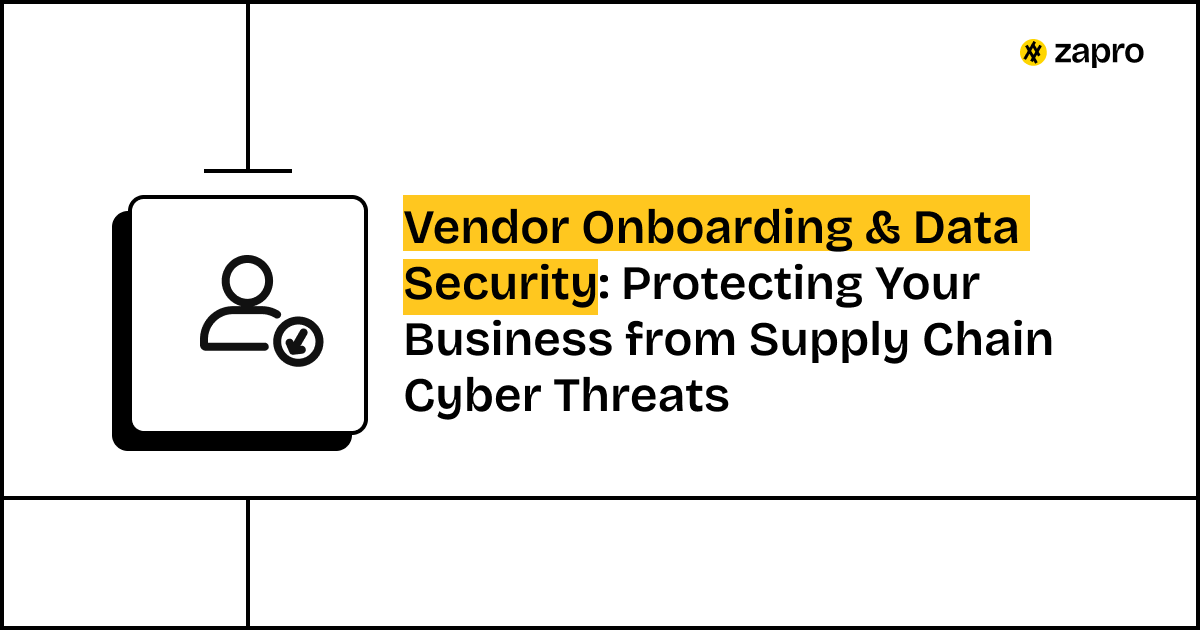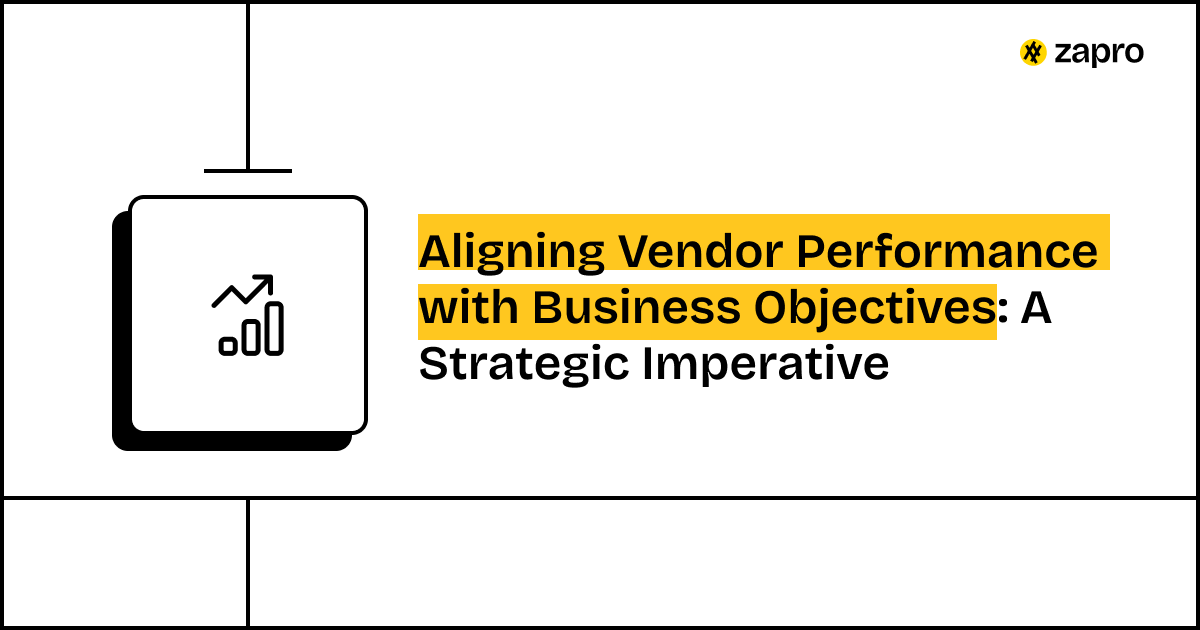You are Here: Vendor Management Software >> Supplier Relationship Management
What is Supplier Relationship Management (SRM)?
Supplier Relationship Management (SRM) is about more than just overseeing vendors; it’s about building real partnerships with the suppliers who matter most to your business.
While basic vendor management focuses on pricing, contracts, and delivery timelines, SRM goes deeper. It helps procurement teams work with suppliers to drive innovation, reduce risk, and create long-term value.
In short, when done the right way SRM can turn suppliers into strategic allies.
But SRM isn’t just a procurement function.
It works best when finance, legal, and operations teams are involved because supplier performance touches every part of the business.
At its core, SRM is a shift from managing suppliers to partnering with them. And in today’s volatile supply chains, that shift is more important than ever.
So how do you put SRM into practice without adding more complexity?
That’s exactly what we’ll explore in the rest of this guide.
The Strategic Role of SRM in Modern Procurement
Supplier Relationship Management (SRM) is more than just a regular oversight; it’s how procurement teams create real, measurable value.
- Resilience: Strong supplier ties mean faster responses to disruptions like shortages or geopolitical risks.
- Innovation: Trusted suppliers bring new ideas and improvements to the table.
- Sustainable cost savings: Long-term planning and collaboration often unlock savings beyond basic price cuts.
It also supports key governance goals:
- Risk: Spot and act on early signs of supplier failure or over-dependence.
- Compliance: Ensure regulatory and contractual standards are met.
- Sustainability: Align sourcing with ESG and ethical goals.
In a high-risk, fast-moving world, SRM is no longer optional; it’s a core driver of supply chain strength and strategic impact.
Learn about How to improve the supplier relationship.
Supplier Relationship Management – The Exact 7-Step Process
A successful SRM process is a structured, ongoing cycle that helps businesses get the most out of their supplier relationships.

Here’s what it mostly entails:
- Supplier Segmentation
Not all suppliers are equal.
Start by categorizing them based on their strategic value to your business such as spend volume, risk level, or impact on operations.
Once suppliers are identified, bring them into your ecosystem with clear expectations, documentation, and compliance checks.
- Standardize contracts, certifications, and communication protocols
- Digitize the onboarding flow to speed up approvals and minimize manual errors
- Performance Monitoring
Regularly track supplier performance using defined KPIs such as delivery timelines, quality metrics, cost adherence, and service levels.
- Use dashboards and scorecards for visibility
- Establish baseline expectations and flag underperformance early
- Collaboration & Relationship Building
Move beyond transactional communication. Create channels for feedback, joint planning, and transparency.
- Schedule regular review meetings
- Share forecasts and business plans for alignment
- Discuss improvement opportunities jointly
- Continuous Improvement
Use performance data and feedback to refine your approach. Reward top-performing suppliers, and support underperformers with improvement plans.
- Reassess supplier tiers periodically
- Incorporate lessons learned into sourcing and contract strategies
- Technology & Tools
Modern SRM is impossible to scale without the right technology.
- Use Supplier Management Software to centralize data, automate workflows, and monitor risk
- Leverage tools with integrated analytics, alerts, and document management
- Solutions like Vendor Management Systems or Procurement Software streamline communication, onboarding, and compliance
- Risk and Compliance Integration (often overlooked but critical)
Integrate risk and compliance checks into every stage—from onboarding to performance reviews.
- Track certifications and audit results
- Maintain visibility into geopolitical or financial risks tied to key suppliers
| In short: The SRM process is an end-to-end framework that transforms how your organization works with suppliers—from selection and setup to long-term value creation. With the right structure and vendor management tools, SRM can become a competitive advantage. |
Why is SRM Important?
Supplier Relationship Management (SRM) goes beyond managing vendors; it’s about building strategic partnerships that create long-term value for the business.
The importance of SRM is best understood when you look at both the tangible benefits and the strategic impact it delivers.
1. Tangible, Measurable Benefits
- Cost savings beyond negotiations
Long-term relationships often lead to more favorable pricing, better payment terms, and reduced total cost of ownership. Suppliers who understand your business can proactively suggest cost-reduction opportunities. - Reduced risk exposure
By working closely with suppliers, businesses can identify risks early—whether it’s financial instability, regulatory non-compliance, or potential supply chain disruptions. A strong SRM process builds resilience into procurement. - Improved quality and consistency
Trusted suppliers are more invested in maintaining high standards. Regular feedback and performance monitoring help raise the bar on quality, reliability, and service levels. - Supplier-led innovation
The best ideas often come from the outside. Suppliers—especially strategic ones—can offer insights on new materials, technology, or ways to streamline operations, helping you stay ahead of the curve.
2. Strategic Business Advantages
- Preferred customer status
When you’re seen as a valuable partner (not just a buyer), suppliers prioritize your orders, share early access to innovations, and allocate their best resources to your account—especially critical during shortages or crises. - Joint growth opportunities
Mature SRM enables collaborative planning and co-development, where both sides align on future growth, market expansion, or product innovation. - Faster time-to-market
A tightly integrated supplier ecosystem speeds up procurement cycles and helps you respond faster to market changes. - Improved ESG outcomes
SRM enables better oversight of ethical sourcing, environmental impact, and labor practices—key to meeting sustainability goals and investor expectations.
3. Direct Impact on Procurement KPIs
SRM has a clear, measurable impact on core procurement performance metrics:
| KPI | How SRM Helps |
| Cost Savings | Joint cost-optimization and better terms |
| Supplier Performance | Ongoing monitoring and collaboration |
| Risk Reduction | Proactive risk identification and mitigation |
| Contract Compliance | Stronger governance and communication |
| Supplier Lead Times | Streamlined coordination and forecasting |
| Innovation Contribution | Measurable input from suppliers to new projects |
4. A Strategic Shift in Procurement’s Role
With SRM, procurement isn’t just about sourcing—it becomes a central business function that contributes to innovation, agility, and competitiveness. It gives procurement teams more influence within the organization and a stronger seat at the decision-making table.
| Bottom line: SRM is no longer optional for businesses that want to scale, innovate, and operate sustainably. It unlocks not just efficiency but strategic advantage. |
Learn about Vendor Relationship Management for Crisis and Disruption Resilience.
How Effective SRM Drives Procurement Success
Traditionally, procurement has been viewed as a back-office function—focused on cost control, purchase orders, and ensuring timely deliveries. But with a strong Supplier Relationship Management (SRM) approach, procurement evolves into a strategic powerhouse that directly shapes business outcomes.
Here’s how SRM transforms the role of procurement:
1. From Operational to Strategic
Instead of just executing purchases, procurement teams now drive supplier collaboration, assess long-term value, and contribute to high-level decision-making.
- Procurement becomes a key stakeholder in shaping supply chain strategy
- Long-term supplier partnerships reduce firefighting and reactive buying
2. Influence on Product Design & Innovation
When suppliers are brought in early, they can contribute to product development, design changes, and even suggest new materials or technologies.
- Shortens development cycles
- Improves product quality and sustainability
- Enables innovation at the source, not just in-house
3. Faster Market Responsiveness
Collaborative suppliers can adjust faster to shifting market demands—whether it’s changing customer preferences, regulatory shifts, or sudden spikes in demand.
- Better forecasting and demand planning
- Agility in scaling up or down without compromising quality or delivery
4. Enhanced Internal Visibility
With a centralized view of supplier performance, risks, and opportunities, procurement teams provide valuable insights to finance, operations, and leadership.
- Supports better budgeting and spend forecasting
- Improves strategic alignment with business goals
5. Cross-functional Collaboration
SRM fosters tighter coordination with other departments like R&D, finance, legal, and marketing.
- Aligns procurement goals with product, compliance, and financial objectives
- Reduces friction and silos across teams
6. Procurement as a Business Partner
With SRM in place, procurement is no longer just a support function—it becomes a partner in driving growth, innovation, and resilience.
- Builds credibility across departments
- Gives procurement a voice in board-level conversations

By moving away from time-consuming, error‑prone manual processes to automated processes, you can avoid mistakes, better manage payments and [improve collaborations].”
SRM Best Practices for Success
- Segment and tier suppliers
Not all suppliers need the same attention. Focus more on strategic and high-impact partners. - Foster two-way communication
Build trust through open, honest, and regular dialogue. Listen as much as you speak. - Conduct regular performance reviews
Use clear metrics and feedback sessions to keep suppliers aligned and accountable. - Engage in joint business planning
Collaborate on goals, forecasts, and improvements. Plan for mutual growth. - Leverage technology
Use Supplier Management Software, dashboards, and scorecards to track performance and risks. Automation makes SRM scalable and transparent. - Encourage continuous improvement
Support suppliers with training or resources to raise standards over time. - Manage risks proactively
Identify potential issues early and work together on mitigation plans.
Why Supplier Relationship Management Matters More than Ever and How Zapro Can hHelp
Supplier Relationship Management isn’t just another procurement task. It’s a long-term strategy that helps your business:
- Build resilience against supply chain disruptions
- Spark innovation through closer supplier collaboration
- Gain a real competitive edge by reducing risk and unlocking cost savings
Traditional vendor management can’t deliver this kind of value. That’s why you need a platform designed for the full picture.
Here’s why Zapro stands out:
- An all-in-one solution that manages every aspect of supplier relationships—from onboarding to ongoing performance tracking
- Centralizes communication, collaboration, and risk management in one easy-to-use platform
- Gives procurement teams better visibility and control, moving them from reactive firefighting to proactive strategic partners
- Helps nurture strong, trust-based partnerships that accelerate business results
If you want to elevate your procurement game and turn supplier relationships into a true business advantage, Zapro is the partner you need.
Ready to unlock the full potential of Supplier Relationship Management? Explore what Zapro can do for you today.
Strengthen supplier partnerships with ease – start your journey with Zapro.

FAQ
1. What is the main goal of Supplier Relationship Management?
The primary objective of Supplier Relationship Management (SRM) involves creating enduring business partnerships with essential suppliers to achieve supplier performance management and maximize partnership value. The system works to create better supplier interactions and trust development while enhancing supplier performance between businesses and their suppliers. The main objective of SRM is to establish risk reduction and quality improvement and sustainable cost-effective relationships with suppliers.
2. How does Supplier Relationship Management impact procurement strategy?
The procurement strategy depends heavily on Supplier Relationship Management because it enables organizations to develop supplier capabilities that support their business objectives. The system enables organizations to develop enduring business relationships with suppliers while selecting strategic partners and securing improved purchasing conditions and optimizing their sourcing operations. The strategic approach of SRM creates strategic partnerships with suppliers to achieve cost efficiency and innovation and better procurement performance and collaborative relationships.
3. What tools are used in Supplier Relationship Management?
Supplier Relationship Management relies on three primary tools which include supplier performance dashboards and contract management software and e-procurement platforms. The tools support real-time data exchange and performance evaluation and risk evaluation processes. The advanced features of SRM systems integrate with ERP solutions to create streamlined workflows which support better decision-making processes.
4. Why is Supplier Relationship Management important in today’s supply chain?
The modern supply chain requires Supplier Relationship Management to achieve reliability and agility and maintain resilience in its operations. Organizations can use this system to prevent disruptions while promoting innovation and sustaining product quality standards. Organizations that implement effective SRM systems gain the ability to react quickly to market shifts while developing market leadership positions.
5. Can small businesses benefit from Supplier Relationship Management practices?
Small businesses can obtain significant advantages from Supplier Relationship Management because it enables better supplier partnerships and lower costs. The system allows small businesses to create better partnerships and secure improved purchasing terms and maintain continuous supply operations. Basic SRM implementation will lead to improved operational efficiency and business reliability and extended business expansion.
Don’t miss our weekly updates
We’ll email you 1-3 times per week—and never share your information.

 Healthcare
Healthcare Financial Services
Financial Services Technology
Technology Venture Capitalist
Venture Capitalist Chief Procurement Officer
Chief Procurement Officer Chief Financial Officer
Chief Financial Officer




